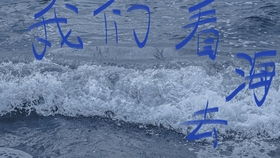Introduction: Deep-sea fishing is an exhilarating and rewarding activity that allows anglers to explore the vast and mysterious depths of the ocean. However, diving into the world of deep-sea fishing can be daunting for beginners. In this article, we will provide you with essential tips and techniques to help you get started and enjoy a successful deep-sea fishing experience.
Understand the Basics: Before you embark on your deep-sea fishing adventure, it is crucial to have a basic understanding of the equipment and techniques involved. Familiarize yourself with the different types of fishing rods, reels, lines, hooks, and lures used for deep-sea fishing. Additionally, learn about the behavior and feeding habits of the fish species you are targeting.
Choose the Right Gear: Selecting the appropriate gear is vital for a successful deep-sea fishing trip. Here are some essential equipment items to consider:
a. Rod and Reel: Invest in a sturdy and durable rod and reel combination specifically designed for deep-sea fishing. Look for a rod with a strong backbone and a reel with a good drag system to handle the fight of larger fish.
b. Line: Use a high-quality monofilament or braided line suitable for deep-sea fishing. The line should be strong enough to withstand the pressure and weight of the fish you are targeting.
c. Hooks: Choose the appropriate size and type of hooks based on the fish species you are targeting. Large hooks are often used for deep-sea fishing, as they can accommodate the size of the fish.
d. Lures and Bait: Research the bait and lures commonly used for the fish species you are targeting. Experiment with different types of lures and baits to see what works best.
Learn the Techniques: Deep-sea fishing requires specific techniques to effectively target and catch fish. Here are some essential techniques to master:
a. Chumming: Chumming involves spreading a mixture of fish oil, blood, and other substances to attract fish. It is a common practice in deep-sea fishing to draw in fish and increase your chances of catching them.
b. Drifting: Drifting allows you to cover a larger area and attract fish that may be following schools of baitfish. Attach your lure or bait to a weight and let it drift naturally, mimicking the movement of prey.
c. Bottom Fishing: Bottom fishing involves anchoring your boat and dropping your bait or lure to the ocean floor. This technique is effective for catching fish that feed on the ocean floor, such as groupers or snappers.
d. Trolling: Trolling involves moving your boat at a steady speed while retrieving your lure or bait through the water. This technique is effective for targeting fish that are swimming in the open water column, such as marlin or tuna.
Safety First: Safety should always be a priority when engaging in deep-sea fishing. Here are some important safety tips:
a. Check the Weather: Before heading out, always check the weather forecast and ensure that it is safe to fish. Avoid going out during severe weather conditions.
b. Wear Appropriate Gear: Dress in appropriate clothing and gear to protect yourself from the elements. Wear a life jacket, sunscreen, and protective footwear.
c. Learn Basic First Aid: Familiarize yourself with basic first aid techniques to handle minor injuries or emergencies during your fishing trip.
Practice Patience and Persistence: Deep-sea fishing can be unpredictable, and catching fish may not always come easily. Patience and persistence are key to a successful fishing trip. Stay focused, stay positive, and keep experimenting with different techniques and baits.
Conclusion: Deep-sea fishing offers an unforgettable experience, but it requires preparation, knowledge, and practice. By understanding the basics, choosing the right gear, mastering the techniques, prioritizing safety, and maintaining patience, you can increase your chances of a successful deep-sea fishing adventure. So, grab your gear, dive into the ocean, and enjoy the thrill of catching fish in the deep blue sea!












